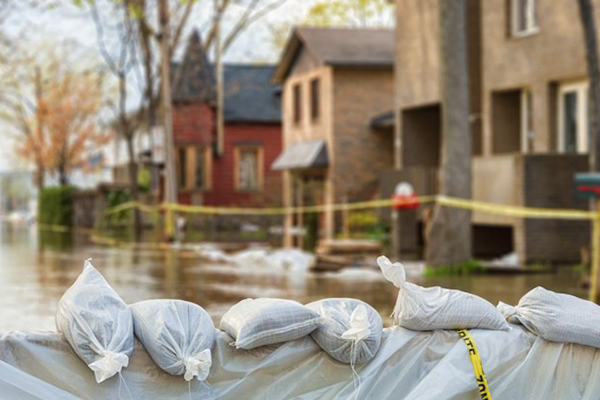
What are the causes of flooding
Posted on 28th July 2022 by Katherine Ducie

Flooding can have disastrous consequences for any business. Even a small amount of flood water can lead to lost stock, ruined equipment and damaged property, all of which can stop you trading. In turn, this can cause clients to take their business elsewhere.
Although certain insurance policies, such as business interruption insurance, can protect your business’ finances should a flood stop you trading, it’s also important for business owners to understand how floods occur. Only then can you proactively protect your business from floods and act to prevent major disruption where possible.
With this in mind, this guide explains how different types of floods occur and what telltale signs to look out for. It will also look at how much flooding costs the UK each year.
How do floods happen?
Put simply, a flood occurs when water inundates an area that is normally dry. This can be down to natural causes or, in some circumstances, due to poor design or maintenance of man-made infrastructure. Below we look at the main types of flooding that occur in the UK.
Types of flooding
There are two main causes of flooding, both of which can lead to different types of water damage. These are:
1. Flooding caused by weather events
The most frequent type of natural disaster, flooding caused by extreme weather not only poses a threat to your business, but also to public health and safety. In the UK, this type of flooding is caused by:
- Unusually heavy rainfall over a short period of time
Known as flash floods, these floods occur when drainage and sewage systems cannot cope with the sheer volume of water, meaning excess rainwater cannot disperse. This leads to the water inundating usually dry areas such as streets, fields, homes and businesses.
- Prolonged periods of heavy rainfall
This is the most common cause of mass flooding in the UK. It happens when unusually prolonged rainfall saturates the ground to the point where the soil cannot store anymore water. When this happens, increased surface run-off leads to flooding. On top of this, prolonged rainfall also enters rivers, lakes and reservoirs at a much faster rate than usual. This can cause higher discharge levels, which can lead to waterways breaking their banks.
- High tides combined with stormy conditions
Coastal flooding occurs when the sea is at high tide and stormy conditions cause waves to come over the top of (or even breach) coastal defences. Obviously limited to coastal areas, this type of flooding can overwhelm regular storm drains and cause major damage to roads, buildings and other infrastructure. As this flooding involves salty seawater, which is more corrosive than freshwater, flooding of this type can cause even more damage to infrastructure.
2. Flooding caused by human activities
Aside from natural causes, flooding can also be triggered by human activity. Although usually an unintentional side effect of bad design or poor maintenance, these floods can have a huge impact on business, as well as public life more generally. These causes include:
- Inappropriate construction
Constructing buildings, roads and other structures out of impermeable materials increases surface water run-off. If appropriate storm drains, sewage systems and/or flood defences are not included in development planning, excess rainwater may have nowhere to go. This leads to an increased flood risk.
- Irresponsible deforestation
Often tied in with poorly designed construction, the removal of vegetation such as trees, shrubs and open green land can lead to areas becoming more prone to flooding. This is because vegetation can absorb and intercept excess rainfall. The movement of potential flood water can be slowed, meaning there is more time for it to be absorbed by the land or evaporated into the atmosphere before surface run-off can become an issue in built up areas.
- Infrastructure failures
Aside from new construction projects, the failure of existing infrastructure can also lead to flooding. This could include major water mains bursting due to trauma or poor maintenance, or storm drains becoming blocked or compromised. In extreme cases, this may also include dams breaking or becoming overwhelmed. This could be down to poor maintenance, faulty construction or simply unusually extreme weather conditions.
How much does flooding cost the UK each year?
According to the Environment Agency, as recently as the 2015/16 financial year, the cost of flooding was quoted as £1.6 billion over the 12-month period. However, on average, this cost is thought to be closer to the £1.3 billion a year mark. From this figure, around 32% is thought to come directly from the business sector. These costs are calculated through the study and analysis of damage caused to flooded businesses and private properties. Both costs of repair and ongoing loss of earnings are taken into account to ensure the cost to the economy is calculated as accurately as possible.
At Caunce O’Hara we provide business interruption insurance to protect your finances if a flood was to occur and affect the running of your business. Click here to find out more.
Useful Links

Public Liability Insurance
Protects against claims of injury to third-parties or damage to a third-party's property.

Legal Expenses and Tax Investigation Insurance
Cover for contract disputes, tax investigations, court attendance, debt recovery, and more.

